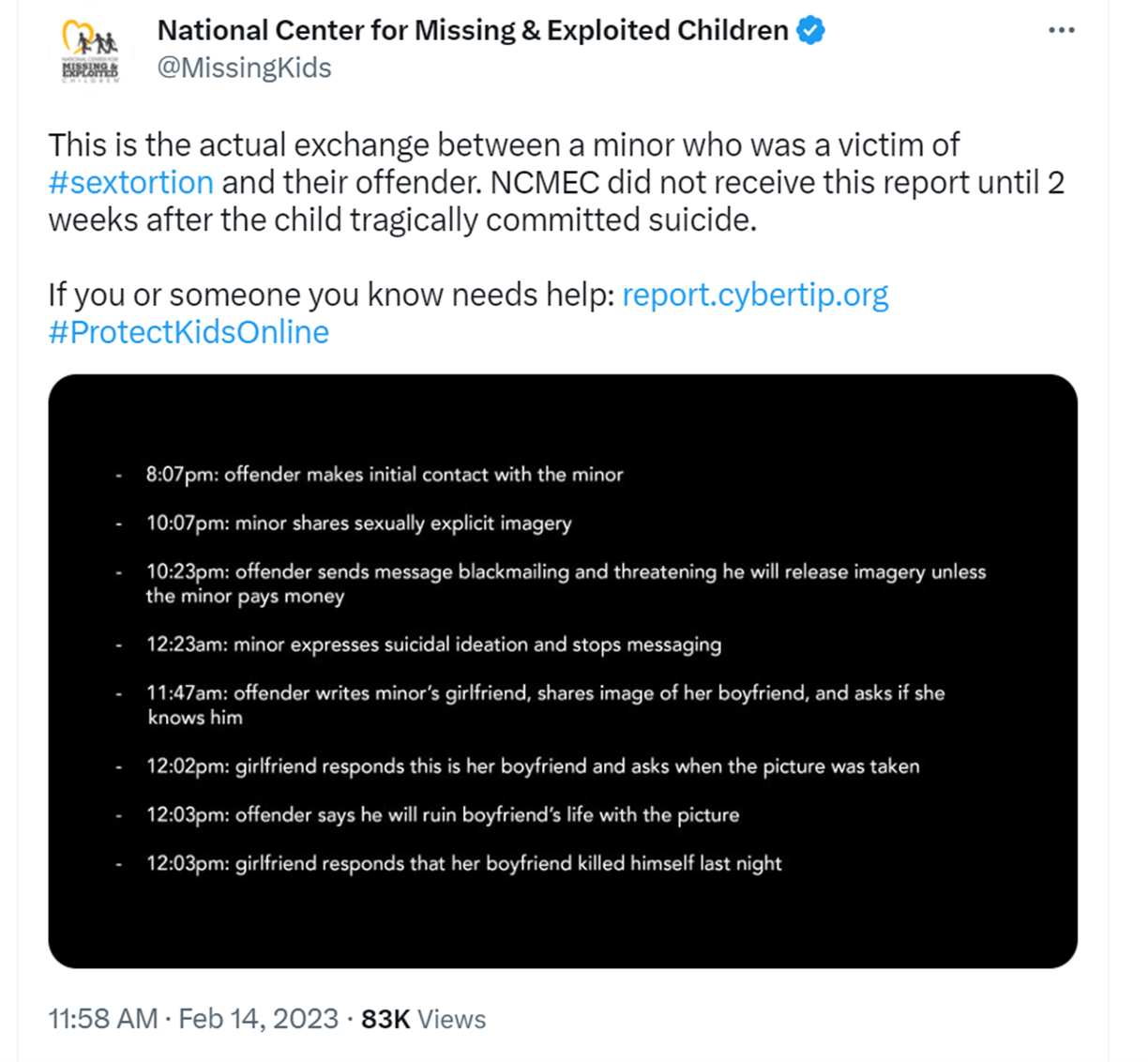Catfishing and Sextortion: Real World Danger
February 16, 2023
In 2012, MTV started a series which highlighted the deceptive practices of individuals in the online dating world, titled “Catfish.” As a common internet term, “catfish” is someone who creates a fake profile on social media, dating, and chatroom sites. This is often done by combining another person’s photos with false personal information (height, weight, age, etc.) to create a realistic fake identity. Catfishing was dismissed at first, but it is on the rise and can no longer be disregarded, as it carries real burdens, emotional damage, actual physical harm, and sexual exploitation.
A notable case of catfishing was subject of a Netflix documentary, “ Untold: The Girlfriend Who Didn’t Exist,” which detailed the events surrounding Notre Dame football player Manti Malietau Louis Te’o, or Manti Te’o. During 2012, Te’o was the victim of an online catfishing relationship which he believed to be real and was very emotionally invested. The perpetrator of the catfishing, Ronaiah “Naya” Tuiasosopo, used photos of a high school acquaintance of hers to develop a fake online identity known as Lennay Kekua. The elaborate details, utilization of photos, stories of a car accident and diagnosis of leukemia kept Te’o invested and involved in this catfishing hoax. Tuiasosopo used other acquaintances to validate their online Lennay persona and when Lennay eventually died from her supposed leukemia illness, Te’o was devastated.
During this catfishing incident, Te’o, a promising NFL prospect, often referenced the death of girlfriend “Lennay” in press conferences and recorded interviews as an influential part of his football career. However, when more questions about her death and his stories about their relationship were raised, it was discovered Lennay did not exist. While it was eventually discovered Te’o was a victim of catfishing, at the time future football prospects were jeopardized due to accusations that he participated in the catfishing hoax to garner public favor. The backlash against Te’o was vicious, and as a result he was isolated, and suffered from severe depression and anxiety.
However, some catfishing cases have escalated into even more dangerous and lethal situations. Thomas Montgomery, a married 46-year-old father of two murdered his co-worker, 22-year-old Brian Barrett as a part of an online love triangle caused by catfishing.
Sextortion ‘is a form of child sexual exploitation where children are threatened or blackmailed, most often with the possibility of sharing with the public a nude or sexual images of them'”
In 2005, Montgomery created the persona of an 18-year-old male in an online chatroom and started an online relationship with an alleged “18-year-old girl.” This relationship took place over a year as he exchanged photos of his younger self with this girl. When his secret was found out and the “girl” discovered his true age, she somehow found and began messaging Montgomery’s co-worker Barret online in the same forum. Her goal was to make Montgomery angry and jealous. At the same time, the “girl” known as “talhotblond” continued to chat with Montgomery. Ultimately, Montgomery’s rage and jealousy grew to the point where he shot and killed Barret. As the investigation unfolded, it came to light that “talhotblond” was actually Mary Shieler, a 45-year-old married mother who had used her daughter’s photos to create her fake online profile to talk to numerous men.
Then in November 2022, catfishing caused a kidnapping and multiple murders that made news headlines for weeks. Austin Lee Edwards, a Virginia State Sheriff’s Deputy, traveled to Riverside California, kidnapped a 15-year-old girl after murdering three of her family members and set their home on fire. Edwards had met this girl online while posing as a 17-year-old male. They had numerous online conversations, shared explicit messages, and images with one another. Little is known about when, how long, and what platform was used for this online exchange, but the consequences were dire. While the girl was eventually rescued, Edwards died in a shootout with law-enforcement leaving many questions unanswered.
Catfishing is also used for the online sexploitation of children. This has become a regular practice and is on the rise. The National Center for Missing and Exploited Children reported a 97% increase in cases involving online enticement of children in 2020, and a dramatic increase in cases of sextortion. According to NCMEC, Sextortion “is a form of child sexual exploitation where children are threatened or blackmailed, most often with the possibility of sharing with the public a nude or sexual images of them, by a person who demands additional sexual content, sexual activity or money from the child.”
These situations often arise through the means of catfishing, pretending to be someone similarly aged, making fake profiles, and sending fake or stolen images to gain trust. These cases are on the rise locally as referrals for sexual exploitation of children has increased in southeastern Massachusetts by 40%. In addition, the targeting of young men for sextortion has increased to become one of the highest targeted groups nationally.
Another recent post by NCMEC details the dire consequences of sexploitation by catfishing:

When we talk about online safety, when we ask parents and teens to Take the Pledge and to Be Smart and Be Safe Online, it isn’t because it is something were just supposed to say. It’s because we are seeing the dramatic increase in catfishing and sexploitation right here on Cape Cod, Nantucket, and Martha’s Vineyard. We are imploring parents and caregivers to Have the Conversation with your children; about online safety, about body safety, about family rules and values. Please start these conversations early, and even if you didn’t, start them now. Have these conversations often, because the risks to children and dangers they may encounter online are just as frequent.






